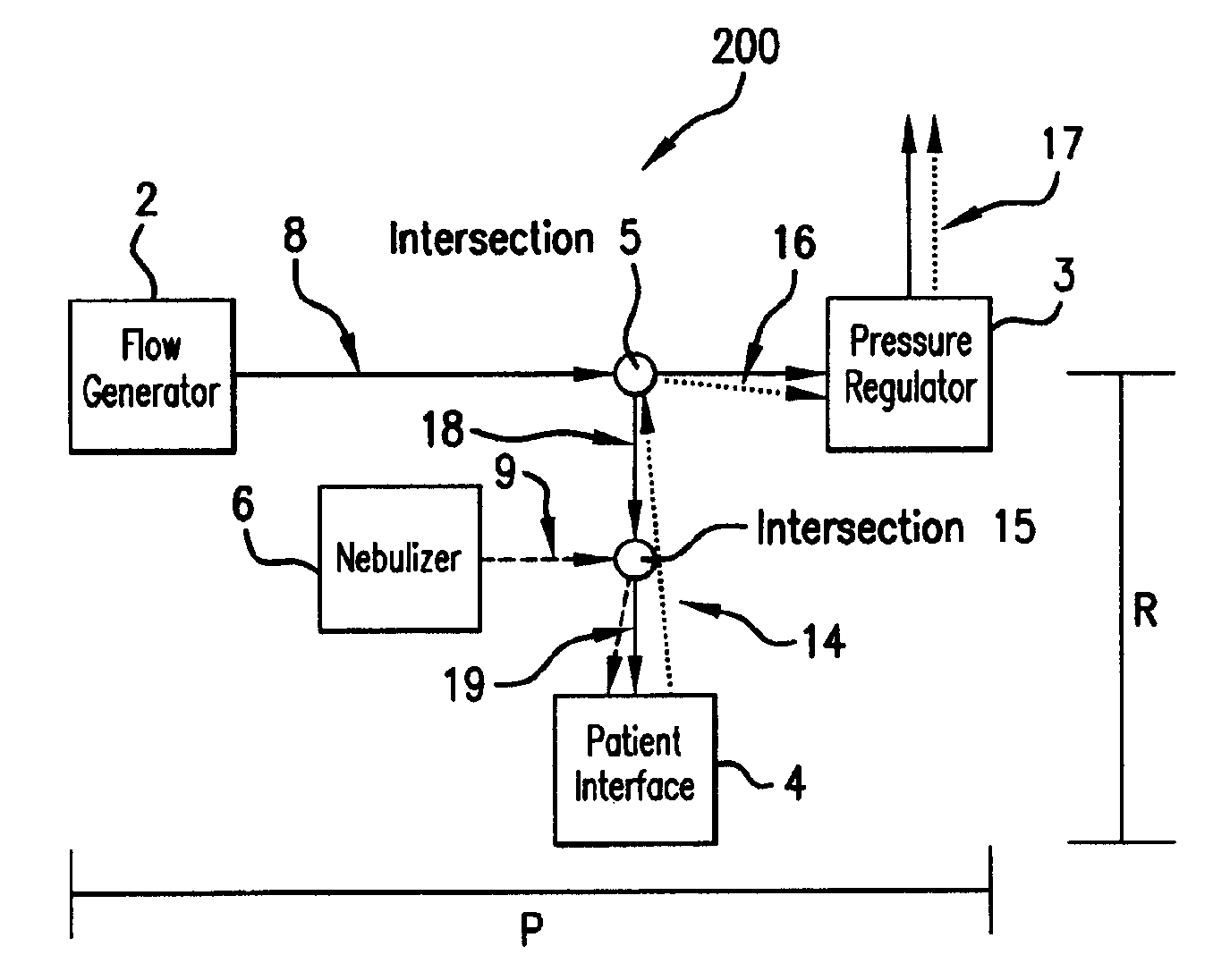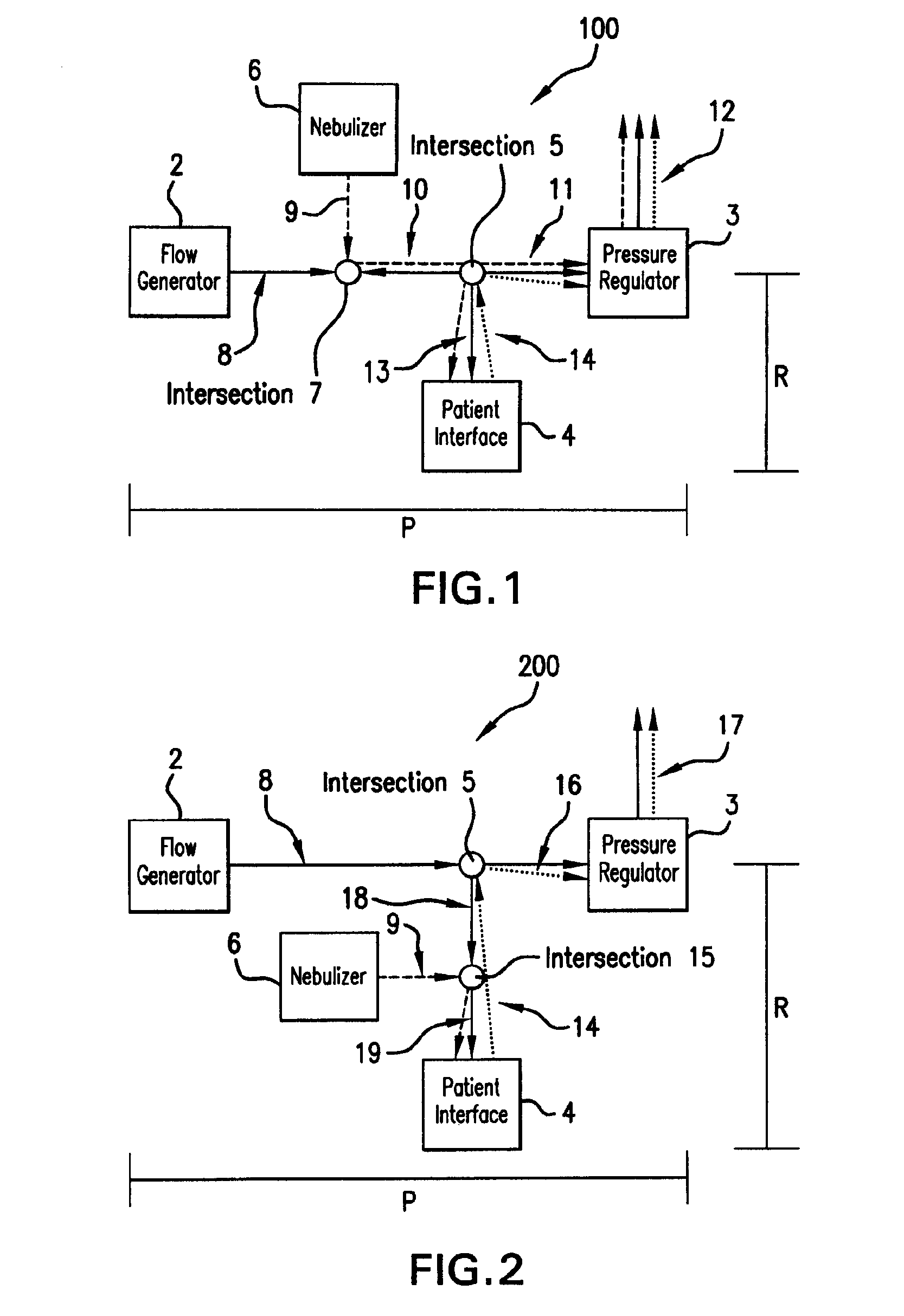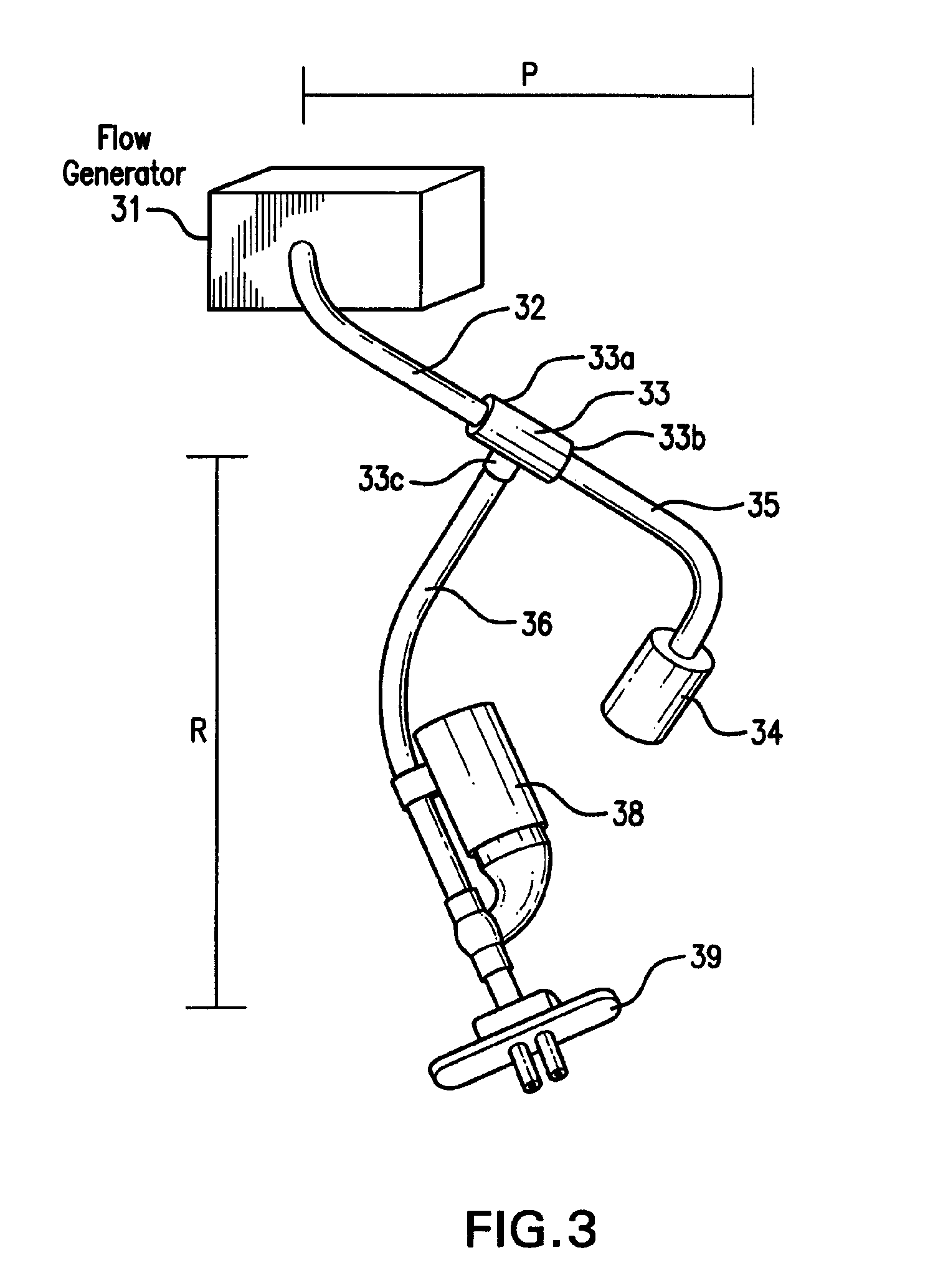Ventilation systems and methods employing aerosol generators
a technology of generators and aerosols, applied in the direction of valves, respirators, mechanical devices, etc., can solve problems such as certain challenges, and achieve the effects of minimizing dilution effects, quiet operation, and small siz
- Summary
- Abstract
- Description
- Claims
- Application Information
AI Technical Summary
Benefits of technology
Problems solved by technology
Method used
Image
Examples
Embodiment Construction
[0019]The following detailed description is directed to a CPAP embodiment of the invention for illustrative purposes only, it being understood that the invention is not limited to such embodiment and can be applied to other pressure-assisted breathing systems.
[0020]FIG. 1 of the drawings is a schematic illustration of a CPAP system 100 employing a nebulizer. The CPAP system 100 includes a primary pressure-generating circuit P and a respiratory circuit R. Circuit P includes a flow generator 2 in fluid communication with a pressure-regulating device 3. Respiratory circuit R includes a patient interface device 4 in fluid communication with circuit P at intersection 5. Nebulizer 6 is in fluid communication with circuit P at intersection 7 upstream to intersection 5. In operation, a high volume flow of gas 8 is introduced into circuit P from flow generator 2 and passes to and through pressure-regulating device 3 so as to maintain a positive pressure in the system. Nebulizer 6 emits an ae...
PUM
 Login to View More
Login to View More Abstract
Description
Claims
Application Information
 Login to View More
Login to View More - R&D
- Intellectual Property
- Life Sciences
- Materials
- Tech Scout
- Unparalleled Data Quality
- Higher Quality Content
- 60% Fewer Hallucinations
Browse by: Latest US Patents, China's latest patents, Technical Efficacy Thesaurus, Application Domain, Technology Topic, Popular Technical Reports.
© 2025 PatSnap. All rights reserved.Legal|Privacy policy|Modern Slavery Act Transparency Statement|Sitemap|About US| Contact US: help@patsnap.com



